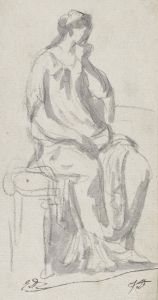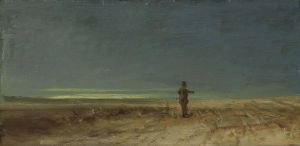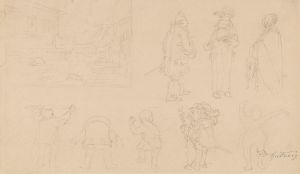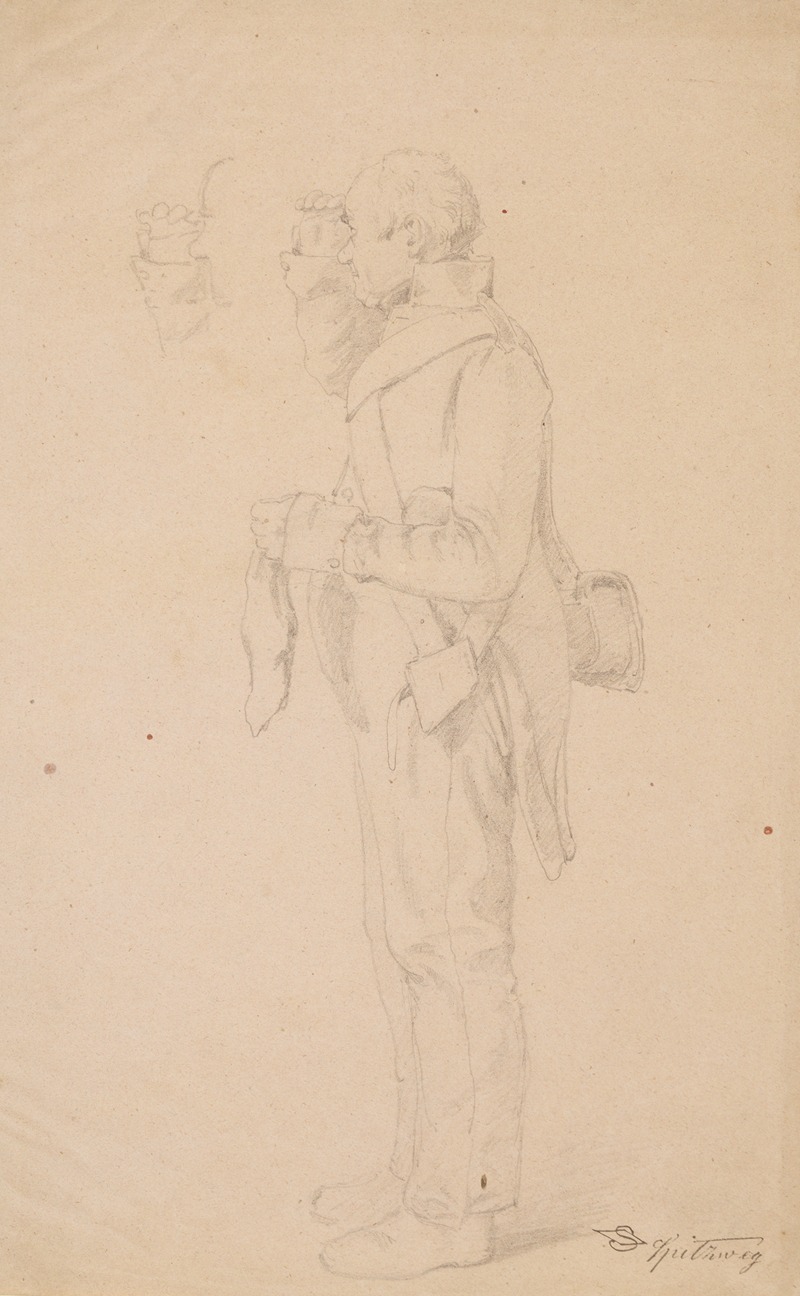
In die Ferne schauender Soldat
A hand-painted replica of Carl Spitzweg’s masterpiece In die Ferne schauender Soldat, meticulously crafted by professional artists to capture the true essence of the original. Each piece is created with museum-quality canvas and rare mineral pigments, carefully painted by experienced artists with delicate brushstrokes and rich, layered colors to perfectly recreate the texture of the original artwork. Unlike machine-printed reproductions, this hand-painted version brings the painting to life, infused with the artist’s emotions and skill in every stroke. Whether for personal collection or home decoration, it instantly elevates the artistic atmosphere of any space.
"In die Ferne schauender Soldat" (The Soldier Gazing into the Distance) is a painting by the German artist Carl Spitzweg, created in the mid-19th century. Spitzweg, born on February 5, 1808, in Unterpfaffenhofen, Bavaria, is renowned for his Biedermeier-style paintings that often depict everyday scenes imbued with a sense of humor and romanticism.
The painting portrays a lone soldier standing on a rocky outcrop, gazing into the distance. The soldier is dressed in a uniform typical of the 19th century, complete with a shako hat and a rifle slung over his shoulder. The landscape around him is rugged and expansive, suggesting a sense of isolation and contemplation. The sky is painted with soft, muted colors, indicating either dawn or dusk, which adds to the melancholic and reflective mood of the piece.
Spitzweg's attention to detail is evident in the meticulous rendering of the soldier's uniform and the natural surroundings. The artist's use of light and shadow enhances the three-dimensionality of the figure and the terrain, creating a realistic yet romanticized scene. The painting is a fine example of Spitzweg's ability to capture the subtleties of human emotion and the beauty of the natural world.
Carl Spitzweg was largely self-taught as an artist. Initially trained as a pharmacist, he turned to painting after recovering from an illness. His work often reflects his keen observational skills and his interest in the lives of ordinary people. Spitzweg's paintings are characterized by their intimate scale and their focus on the small, often overlooked moments of daily life.
"In die Ferne schauender Soldat" fits well within Spitzweg's oeuvre, which frequently includes solitary figures engaged in quiet, introspective activities. The painting can be interpreted as a reflection on the soldier's inner life, perhaps contemplating his past, future, or the vastness of the world around him. This theme of introspection and the individual's place within the larger world is a recurring motif in Spitzweg's work.
The painting is housed in the Neue Pinakothek in Munich, Germany, which holds a significant collection of 19th-century art. The Neue Pinakothek is part of Munich's Kunstareal, a museum quarter that includes several other major art institutions. Spitzweg's works are an important part of the museum's collection, offering insight into the cultural and artistic milieu of 19th-century Germany.
Carl Spitzweg passed away on September 23, 1885, in Munich. His legacy endures through his charming and evocative paintings, which continue to be celebrated for their wit, warmth, and keen observation of human nature. "In die Ferne schauender Soldat" remains a testament to Spitzweg's skill as a painter and his ability to convey deep emotional resonance through seemingly simple scenes.





